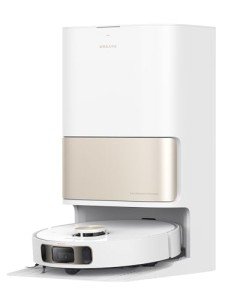Understanding Floor Robots: The Future of Home Cleaning
In the last few years, technological developments have considerably changed the landscape of home cleaning. Amongst the most notable innovations is the floor robot, a device that has actually quickly gotten appeal for its benefit and performance. This article intends to check out the various elements of floor robots, their functionality, advantages, popular designs, and some frequently asked concerns to assist customers make notified decisions.
What is a Floor Robot?
A floor robot, commonly referred to as a robotic vacuum, is an automated gadget created to browse floorings and remove dirt, dust, and particles. Unlike standard vacuum cleaners, floor robots run autonomously, offering a hassle-free cleaning experience. These smart makers use sensing units, mapping innovations, and advanced algorithms to clean different surfaces, including wood, tile, and carpet.
How Do Floor Robots Work?
Floor robots operate through a mix of software and hardware components. Here are the crucial features that enable their performance:
1. Sensors
- Obstacle Detection: Floor robots have integrated sensing units that help them spot barriers, permitting them to navigate around furniture and avoid falls.
- Cliff Sensors: These prevent the robot from falling down stairs or ledges by recognizing changes in elevation.
2. Navigation and Mapping
- Visual Mapping: Some innovative designs use electronic cameras and laser technology to create detailed maps of the cleaning area.
- Simultaneous Localization and Mapping (SLAM): This strategy assists the robot track its location and effectively prepare its cleaning path.
3. Cleaning Mechanisms
- Suction Power: Most robotic vacuums utilize a suction system to record dirt and dust, which is then kept in an onboard dustbin.
- Brushing Systems: Many designs come geared up with rotating brushes or mops for boosted cleaning abilities, especially on carpets or difficult surface areas.
4. Smart Features
- Connection: Many floor robots support Wi-Fi connectivity, permitting users to manage them through mobile phone apps or smart home systems.
- Scheduling: Users can set up cleaning times, guaranteeing their homes are clean even when they're not there.
5. Self-governing Charging
- Self-Docking: Most robots automatically go back to their charging station once their battery runs low, ensuring they're always all set to tidy.
Benefits of Using a Floor Robot
The adoption of floor robots comes with many advantages that make them interesting users:
1. Convenience
Floor robots can clean while users take care of other tasks, permitting multitasking and time-saving.
2. Increased Efficiency
Robotic vacuums often cover more ground in less time compared to conventional techniques, thanks to their organized cleaning patterns.
3. Consistent Cleaning Routine
Users can schedule regular cleansings, making sure that their homes stay tidy without requiring everyday intervention.
4. Accessibility
Robotic vacuums can easily access hard-to-reach areas, such as under furniture or in tight areas.
5. Advanced Features
Lots of models come equipped with features like voice control and app integration, enhancing use and availability.
Popular Floor Robots
When considering a floor robot, different brand names and models accommodate various requirements and budget plans. Here's a brief overview of some leading options:
| Brand | Design | Key Features | Price Range |
|---|---|---|---|
| iRobot | Roomba i7+ | Smart mapping, self-emptying dock | ₤ 600 - ₤ 800 |
| Roborock | Roborock S7 | Sonic mopping, barrier avoidance | ₤ 500 - ₤ 700 |
| Neato | Neato D7 | D-shape design, advanced suction | ₤ 600 - ₤ 800 |
| Ecovacs | Ecovacs Deebot T8 | Mopping function, advanced mapping | ₤ 600 - ₤ 800 |
| Shark | Shark IQ Robot | Self-emptying base, home mapping | ₤ 400 - ₤ 600 |
(Note: Prices might differ based on retailers and ongoing promos.)
Often Asked Questions (FAQs)
1. Are floor robots reliable on carpets?
Yes, most contemporary floor robots are created to clean various surfaces, including carpets. best robot vacuum under 200 with strong suction and turning brushes are particularly effective at getting family pet hair and ground-in dirt.
2. How frequently should I run my floor robot?
This depends upon your home's requirements. For homes with animals or high foot traffic, daily or every other day cleaning might be advantageous. For quieter homes, running the robot as soon as a week may be enough.
3. Can I control my floor robot remotely?
Numerous floor robots include smartphone apps that allow users to manage their devices from another location, schedule cleansings, and display performance.
4. Do I require to clear the dustbin frequently?
Most robots need regular emptying of the dustbin, particularly in homes with animals or heavy soil. Nevertheless, some designs provide self-emptying capabilities, which lessen user participation.
5. Are floor robots ideal for all kinds of flooring?
A lot of floor robots work on various surface areas, including wood, tile, and low-pile carpets. Nevertheless, some might carry out much better on specific surface areas, so it's necessary to select a design matched to your home's needs.
As homes continue to embrace innovation, floor robots have actually become essential cleaning companions, supplying benefit, performance, and advanced features. Comprehending their functionalities, advantages, and offered designs allows customers to pick the right floor robot to satisfy their particular cleaning needs. By purchasing this ingenious innovation, homeowners can ensure their living areas stay clean and comfortable with very little effort.

